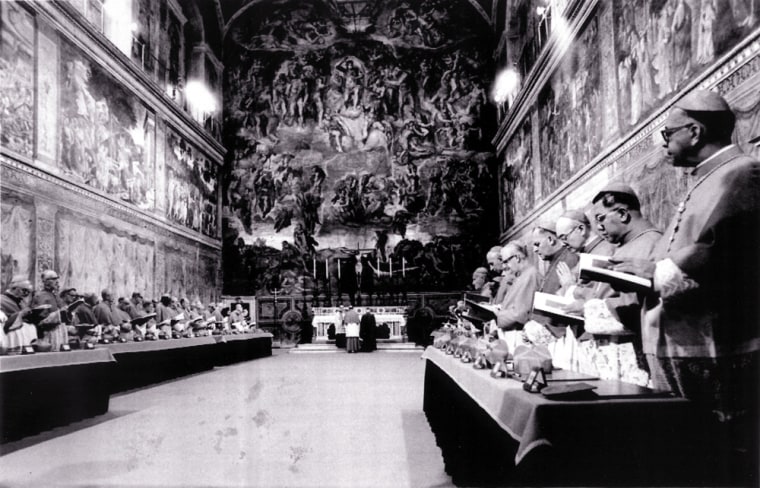Conclaves have a checkered, colorful past that belies the air of sanctity and solemnity surrounding modern papal elections.
The first time cardinals were locked up until they elected a pope was in 1241. The Holy See was in a state of virtual war with the German emperor, Frederick II, who held two of the 12 “princes of the church” prisoner.
Anxious for a new pope, the ruler of Rome had the remaining 10 cardinals confined in a squalid, crumbling palace. It worked. After a relatively short 60 days, they elected Celestine IV.
But Celestine lived just 17 days; a long, anxious interregnum of 18 months followed.
Bread-and-water diet
Another even longer interregnum came after the death of Pope Clement IV. By the fall of 1271, the Throne of St. Peter had been vacant for three years. Again, the people locked up the cardinals, this time putting them on a diet of bread and water. The roof of the papal palace was also ripped off, exposing the cardinals to the elements.
Again, extreme measures worked. Within three months, the cardinals had elected Pope Gregory X, who decided to institutionalize the practice of the conclave, a word that literally means “with a key.”
Gregory’s rules were tough — the cardinals’ rations were slowly reduced over the course of the conclave — but they worked. The next few papal elections were quick.
Voting in the privy
Conclaves weren’t just tough, they were often hotbeds of political intrigue and corruption.
In his memoirs, Pius II, one of the Renaissance popes, recalled with distaste the unsavory plotting at the 1458 conclave in which he was elected. Most of it took place in the privy, he said, calling it “a fit place for such elections!”
The 1484 conclave wasn’t much better. The man who became Innocent VIII bribed electors by signing their promotions in his cell the night before the decisive vote.
Naked bribes
The bribery was even more naked in the 1492 election of the Borgia family pope, Alexander VI. A worldly and ruthless Spaniard who had at least eight illegitimate children by three women when he became pope, he handed out dozens of plums — abbeys, fortresses, towns, bishoprics — to nail down votes.
Secular interference was often as blatant as the corruption. For centuries Europe’s Catholic monarchs claimed the right to veto candidates and it eventually became routine for their ambassadors to attend conclaves.
The last veto was exercised as recently as 1903 by Emperor Franz Joseph of Austria and Hungary. The new pope, Pius X, then abolished the royal right of “exclusion.”
